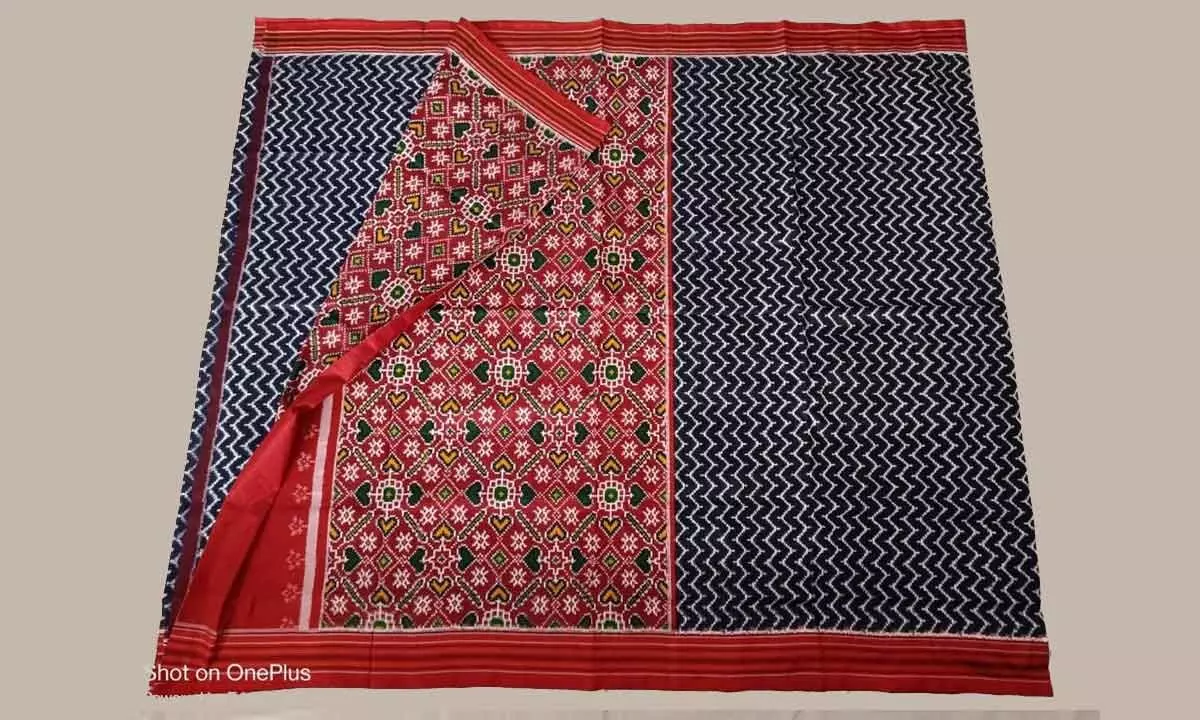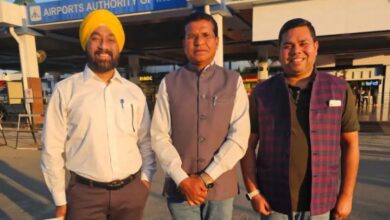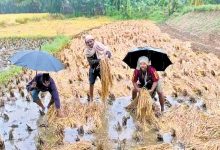Reviving Telia Rumal: Weavers Support To Preserve The Tradition

♦ Telia Rumal,’ the yarn undergoes a unique and meticulous treatment involving sheep dung, castor pod ashes, and oils ♦ This distinctive textile is meticulously crafted through a double ikat weaving technique ♦ This intricate process spans several weeks and is instrumental in enhancing the fabric’s ability to retain vibrant colors, contributing to its distinctive and enduring aesthetic appeal Telia Rumal is an exceptional tie and dye method that employs oil to treat yarn, preserving its inherent softness. Craftsmen work their enchantment using a palette of only three colors: varying shades of red encompassing crimson to orange-red, brown-red, and maroonish-red, as well as white and black. The resulting artwork bears a striking resemblance to Ikaat designs – Ritu Shah, Chairperson, FICCI FLO Hyderabad Enthusiasm among many families for engaging in this cherished handicraft is a cause for concern. The absence of substantial government support has further exacerbated this predicament, prompting our earnest appeal for a subsidy to be extended to these families. Compounding matters, the proliferation of power looms has led to the displacement of numerous traditional clusters. – Shekar, a weaver in Puttapaka Our endeavors to locate viable export channels for our products have reached an impasse. Compounding our challenges, the escalating costs of production, attributed to the surging prices of colors and natural dyes, have further strained our resources. Presently, our inventory remains dormant, exacerbating the situation as government procurement stands at only a fraction of our total output. In earnest, we implore the government to initiate proactive measures for the acquisition of our handlooms. Such a move would not only increase our income prospects but also preserves this invaluable handicraft – P. Venkat Rao, a weaver Hyderabad: Telia Rumal, a renowned handloom tradition in Telangana, is currently facing a pressing challenge marked by a dearth of viable market opportunities for the exquisite products it yields. This unfortunate situation has led to a gradual waning of weavers’ enthusiasm for the intricate art of handicraft weaving. In this context, the weaving community fervently yearns for prompt and decisive intervention from the government to rejuvenate and invigorate this cherished handicraft. Telia Rumal, which translates to “oiled handkerchief,” holds a historical significance dating back to the early 19th century. This distinctive textile is meticulously crafted through a double ikat weaving technique. The resulting square pieces of cloth serve a dual purpose, functioning as elegant veils for women and stylish kerchiefs for men. As denoted by its name, ‘Telia Rumal,’ the yarn undergoes a unique and meticulous treatment involving sheep dung, castor pod ashes, and oils. This intricate process spans several weeks and is instrumental in enhancing the fabric’s ability to retain vibrant colors, contributing to its distinctive and enduring aesthetic appeal. Speaking to The Hans India, Ritu Shah, Chairperson, FICCI FLO Hyderabad, “Telia Rumal is an exceptional tie and dye method that employs oil to treat yarn, preserving its inherent softness. Craftsmen work their enchantment using a palette of only three colors: varying shades of red encompassing crimson to orange-red, brown-red, and maroonish-red, as well as white and black. The resulting artwork bears a striking resemblance to Ikaat designs.” In the realm of Telia Rumal, the meticulously treated yarn is subsequently intricately bound and immersed in natural dyes, in accordance with the preconceived geometric motif. The weaver then undertakes a meticulous orchestration of the warp and weft, a process through which the captivating final pattern gracefully unfurls. The creation of these petite fabric squares demands not only skill and patience, but also a discerning artistic sensibility, showcasing the weaver’s exceptional ability to bring forth these exquisite designs. “Regrettably, our endeavors to locate viable export channels for our products have reached an impasse. Compounding our challenges, the escalating costs of production, attributed to the surging prices of colors and natural dyes, have further strained our resources. Presently, our inventory remains dormant, exacerbating the situation as government procurement stands at only a fraction of our total output. In earnest, we implore the government to initiate proactive measures for the acquisition of our handlooms. Such a move would not only increase our income prospects but also preserves this invaluable handicraft”, says P. Venkat Rao, a weaver. In a bid to diversify the product line, the weavers now create sarees, scarves, dupattas. It takes more than two months to weave a saree. Instead od sticking with the typical geometric designs, new patterns, and motifs are being introduced like lions, elephants, birds, flying dragons, mythical creatures, ticker tapes and even planes. “Regrettably, an evi
















